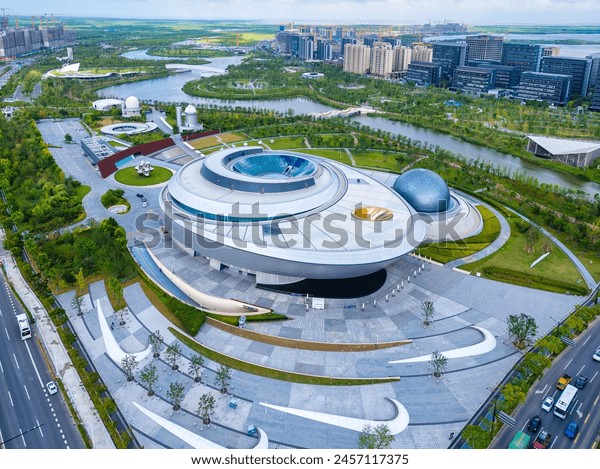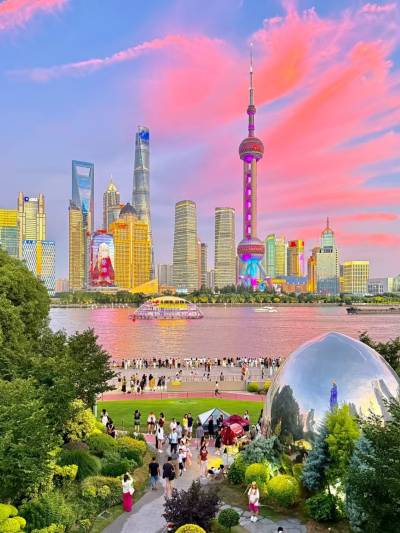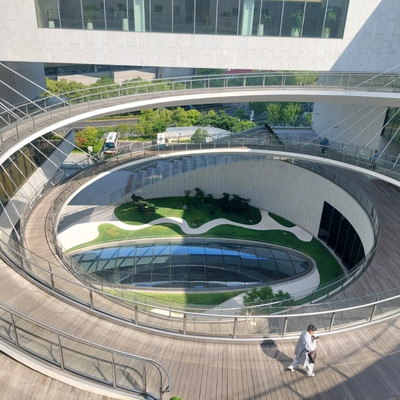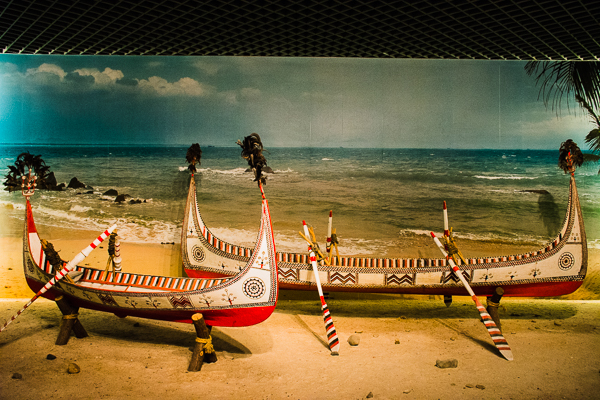Unveiling the Shanghai Museum: A Must-Visit Gem in the Heart of the City

An Essential Guide to Visiting Shanghai_Museum
Nestled in the heart of Shanghai, the Shanghai Museum (上海博物馆) stands as a beacon of Chinese cultural heritage and artistic brilliance. With its stunning architecture and expansive collections, this museum invites visitors on a captivating journey through thousands of years of history. Spanning an impressive 12,000 square meters, the museum houses over 1 million artifacts, including 144,000 rare treasures, making it a treasure trove for history enthusiasts, art lovers, and curious travelers alike.
Upon entering, you’ll find yourself immersed in a world where ancient bronzes, exquisite ceramics, and delicate calligraphy come to life. Each of the four floors is meticulously curated to showcase the rich tapestry of Chinese civilization, from the Neolithic era through the Ming and Qing dynasties. Whether you’re admiring the intricate details of a jade artifact or marveling at the elegance of a Tang dynasty sculpture, every exhibit tells a story that echoes through the ages.
And the best part? Admission to this cultural gem is entirely free, making it accessible for everyone to explore and appreciate. So, whether you’re a seasoned traveler or visiting Shanghai for the first time, the Shanghai Museum promises an unforgettable experience that will deepen your understanding of China’s artistic and historical legacy. Prepare to be inspired and enlightened as you step into this magnificent world of art and history!
In This Guide
- An Essential Guide to Visiting Shanghai_Museum
- The Rich History and Legends of Shanghai_Museum
- Main Highlights: What You Absolutely Can’t Miss
- Planning Your Visit: A Practical Guide
- Tickets: Prices, Booking, and Tips
- How to Get There: A Complete Transportation Guide
- Local Cuisine and Accommodation Nearby
- Frequently Asked Questions
- Final Thoughts on Your Trip
The Rich History and Legends of Shanghai_Museum
Nestled in the bustling heart of Shanghai, the Shanghai Museum (上海博物馆) is not just a repository of artifacts; it is a living testament to the rich tapestry of Chinese history and culture. Established in 1996, this architectural marvel has quickly become one of the city’s premier cultural institutions, drawing millions of visitors eager to immerse themselves in the depths of China’s artistic heritage.
The museum’s roots can be traced back to the early 20th century, when the city was an epicenter of trade and cultural exchange. Originally, it functioned as the Shanghai Museum of Ancient Chinese Art, a modest collection that showcased fine pieces of pottery and bronze. However, as Shanghai transformed into a global metropolis, the need for a more substantial and comprehensive facility became evident. In the late 1980s, the city government initiated plans for a new museum to better reflect China’s vast historical narrative.
Designed by the renowned architect Xing Tonghe, the museum’s structure is inspired by the ancient Chinese concept of a “ding,” a type of ritual bronze vessel, symbolizing stability and prosperity. This design not only serves as a homage to the past but also integrates modern architectural elements, creating a harmonious blend that is visually striking and culturally significant.
Upon its opening in 1996, the Shanghai Museum housed over 120,000 artifacts, a number that has since grown to over 1 million. Among these treasures are 144,000 rare items, including exquisite bronzes, ceramics, calligraphy, and paintings that span thousands of years of Chinese civilization. Each exhibition hall tells a story, inviting visitors to traverse the dynasties from the Neolithic era through to the Qing Dynasty, showcasing the evolution of art and cultural practices.
In addition to its impressive collections, the museum plays a pivotal role in cultural education and exchange. It frequently hosts temporary exhibitions, workshops, and lectures that delve into various aspects of Chinese culture and history, making it a vibrant hub for learning and discovery. The museum also serves as a venue for international exhibitions, fostering a dialogue between China and the world.
Legends and anecdotes abound within the walls of the Shanghai Museum. Visitors often marvel at the tale of the Da Ke Ding, a bronze vessel that not only showcases the artistry of ancient craftsmanship but also embodies the power and prestige of the era in which it was created. Similarly, the museum’s jade collection is steeped in lore, with each piece reflecting the spiritual and cultural significance of jade in Chinese society.
As you wander through the museum’s galleries, you will find that it is more than just a space filled with artifacts; it is a portal to the past where history, art, and culture intertwine. The Shanghai Museum invites you to explore the legends, marvel at the craftsmanship, and connect with the rich history that has shaped not only Shanghai but also the entirety of China. Whether you are a history buff, an art enthusiast, or simply curious about the world, this museum promises an enriching experience that resonates long after your visit.

Shanghai_Museum.
Main Highlights: What You Absolutely Can’t Miss
When visiting Shanghai, a stop at the Shanghai Museum (上海博物馆) is an absolute must. Nestled in the heart of the city at 201 Renmin Avenue, this cultural treasure trove spans 12,000 square meters and showcases over one million artifacts that weave together the rich tapestry of Chinese history. Here’s a closer look at the main highlights that you simply can’t afford to miss during your visit:
Ancient Bronze Gallery
Step into the Ancient Bronze Gallery, where over 400 exquisite bronze artifacts await. This collection spans over 3,000 years, showcasing the evolution of Chinese bronze work from 2100 BC to 300 BC. Each piece tells a unique story, offering a glimpse into the ceremonial and daily life of ancient China. Don’t miss the iconic Da Ke Ding, a monumental bronze vessel that exemplifies the artistic mastery of its time.
Ceramics Gallery
The Ceramics Gallery is a journey through 5,000 years of artistry, featuring stunning pieces from the Neolithic period to the Ming Dynasty. Marvel at the vibrant Tang Sancai and the delicate porcelain of Jingdezhen, known for its intricate designs and historical significance. This gallery not only highlights the beauty of Chinese ceramics but also reflects the cultural exchanges that have shaped China’s artistic heritage.
Calligraphy Gallery
In the Calligraphy Gallery, immerse yourself in the elegance of Chinese script. With over 60 masterpieces on display, this gallery showcases various calligraphic styles, from ancient seals to Qing dynasty works. The fluid brushstrokes and artistic expressions offer a glimpse into the importance of written language in Chinese culture.
Sculpture Gallery
The Sculpture Gallery is home to over 120 stunning sculptures, primarily from the Tang, Northern Wei, and Sui dynasties. The collection is dominated by mesmerizing Buddhist statues, providing insight into the spiritual and artistic influences of the time. Be sure to take your time here—each sculpture invites contemplation of its craftsmanship and historical context.
Jade Gallery
No visit to the Shanghai Museum would be complete without exploring the Jade Gallery. Featuring over 300 jade pieces from the Neolithic period to the Qing Dynasty, this collection highlights the cultural significance of jade in China. The intricate designs and craftsmanship showcase jade as not only a material of beauty but also as a symbol of status and virtue.
Painting Gallery
Art lovers will find the Painting Gallery a true delight, with over 120 paintings that chart the evolution of Chinese art from the Tang to modern times. This gallery features works from renowned periods such as the Song, Yuan, Ming, and Qing dynasties, offering visitors a comprehensive view of China’s artistic journey.
Ethnic Minority Crafts
Discover the diverse cultures of China in the Ethnic Minority Crafts section. This gallery showcases over 600 pieces of traditional clothing, carvings, and lacquerware reflecting the rich artistic traditions of various ethnic groups across the country. It’s a colorful celebration of China’s cultural diversity.
Ancient Coins Gallery
Get a fascinating glimpse into China’s economic history in the Ancient Coins Gallery, where you’ll find over 3,300 ancient coins. This collection illustrates the evolution of currency in China and its role in trade, highlighting the interconnections between commerce, culture, and society.
Ming & Qing Furniture
Step back in time with the Ming & Qing Furniture collection, showcasing over 100 pieces that exemplify the peak of ancient craftsmanship. Each piece tells a story of its own, reflecting the styles and aesthetics of the Ming and Qing dynasties.
Visiting Tips
- Admission: Free!
- Hours: Open daily from 9:00 AM to 5:00 PM (last entry at 4:00 PM), but closed on Mondays, except during national holidays.
- Transportation: Easily accessible by public transport, including Metro Lines 1, 2, and 8, with numerous bus routes serving the area.
By immersing yourself in these highlights, you’ll gain a deeper appreciation for the rich cultural heritage that Shanghai Museum has to offer. Whether you’re an art enthusiast, a history buff, or simply a curious traveler, this museum promises an enlightening experience that will enhance your visit to one of China’s most vibrant cities.

Shanghai_Museum.
Planning Your Visit: A Practical Guide
Visiting the Shanghai Museum promises an enriching experience steeped in China’s cultural heritage. To make the most of your visit, here’s a practical guide outlining essential information, services, and tips for navigating this remarkable institution.
Getting There
Location:
The Shanghai Museum is situated at 201 Renmin Avenue, Huangpu District, making it easily accessible from various parts of the city.
Public Transport:
– Metro:
– Line 1, 2, or 8: Get off at People’s Square Station (Exits 1, 2, or 7).
– Line 10: Take East Nanjing Road Station (Exit 5).
– Buses: Numerous bus routes serve the area, including 18, 23, 42, 46, 49, and 71.
From Airports:
– Hongqiao Airport: Metro Line 2 directly to People’s Square Station.
– Pudong Airport: Metro Line 2 directly to People’s Square Station.
Opening Hours
The museum operates daily from 9:00 AM to 5:00 PM, with the last entry at 4:00 PM. It is closed on Mondays, except during national holidays. Admission is free, so make sure to arrive early to enjoy the extensive collections.
Suggested Visit Duration
Plan to spend around 3 to 4 hours at the museum to fully appreciate the vast array of exhibits and artifacts.
What to See
The museum is divided into four floors, each highlighting different aspects of Chinese culture:
- 1st Floor: Ancient bronzes and rotating exhibitions.
- 2nd Floor: A stunning collection of ceramics from Neolithic times to the Tang dynasty.
- 3rd Floor: The elegance of Chinese calligraphy and exquisite paintings.
- 4th Floor: Ancient jade, furniture, and crafts from various ethnic minorities.
Must-See Exhibits:
– Ancient Bronze Gallery
– Ceramics Gallery
– Sculpture Gallery
– Calligraphy Gallery
– Ethnic Minority Crafts
Services and Accessibility
Visitor Amenities:
– Interactive Smart Guides: Multimedia guides are available in the lobby and exhibition halls for an engaging experience.
– Audio Guides: Rent audio guides in multiple languages at the service desk for a deeper insight into the exhibits.
– Luggage Storage: Free coat and luggage storage is available, and wheelchairs and strollers can be borrowed with a deposit.
– Accessibility: The museum features special lanes and elevators for visitors with disabilities.
Dining Options:
While there are no full-scale restaurants within the museum, free drinking water stations are available, and a café nearby offers light refreshments.
Tips for a Great Visit
- Plan Ahead: Consider downloading the museum’s app for digital guides and interactive features before your visit.
- Join a Tour: Take advantage of free guided tours led by enthusiastic volunteers to gain unique insights into the exhibits.
- Timing: To avoid crowds, visiting early in the day or later in the afternoon is recommended.
Nearby Attractions
After exploring the museum, take time to visit other iconic sites nearby, such as:
– People’s Square: A vibrant area perfect for strolls and photography.
– The Bund: Experience the stunning skyline of modern Shanghai along the Huangpu River.
– Yu Garden: A traditional Chinese garden showcasing beautiful landscapes and architecture.
Conclusion
The Shanghai Museum is not just a place to view artifacts; it is a gateway to understanding the history and culture of China. With this practical guide in hand, you’re well-equipped to explore the treasures that await you at this remarkable institution. Enjoy your visit!

Shanghai_Museum.
Tickets: Prices, Booking, and Tips
Visiting the Shanghai Museum is an enriching experience, and one of the best parts is that admission is completely free! This makes it an accessible option for all travelers eager to explore the depths of Chinese culture and history without breaking the bank.
Admission Details
- Cost: Free! No tickets are required for general entry.
- Reservation: While general admission is free, it’s advisable to reserve tickets in advance during peak seasons or if you plan to visit special exhibitions.
- Opening Hours: The museum operates from 9:00 AM to 5:00 PM, with the last entry at 4:00 PM. Note that the museum is closed on Mondays, except during national holidays.
Booking Tips
- Plan Ahead: If you’re visiting during busy times, such as weekends or public holidays, consider booking your tickets online beforehand to ensure a smooth entry.
- Special Exhibitions: Keep an eye out for any special exhibitions that may require a reservation, especially if you’re interested in specific cultural showcases.
Getting There
- Public Transport: The museum is easily accessible by metro and bus. The nearest metro stations are People’s Square Station (Lines 1, 2, and 8) and East Nanjing Road Station (Line 10). Numerous bus routes also stop near the museum.
- Accessibility: The museum is equipped with special pathways and services for seniors and individuals with disabilities, ensuring everyone can enjoy their visit.
Visitor Services
- Audio Guides: Enhance your experience by renting an audio guide available in multiple languages, including English, Mandarin, and French. They can be rented at the service desk or accessed via the museum’s official app.
- Interactive Experiences: For a unique twist, don’t miss the interactive smart guides that offer multimedia insights into the exhibits.
Additional Tips
- Duration of Visit: Plan to spend 3 to 4 hours exploring the museum to fully appreciate the extensive collections.
- Dining Options: While on-site dining is available with a restaurant and café, you might also want to explore local eateries nearby for a taste of Shanghai’s culinary delights.
With its rich collections and engaging exhibits, the Shanghai Museum promises a captivating journey through China’s artistic history, all at no cost. Make sure to take advantage of the free admission and immerse yourself in this cultural treasure!
How to Get There: A Complete Transportation Guide
Getting to the Shanghai Museum is a breeze, thanks to the city’s extensive public transportation network. Here’s a comprehensive guide on how to reach this cultural gem located at 201 Renmin Avenue in the Huangpu District.
By Metro
The Shanghai Metro is one of the most efficient ways to travel across the city. Here are the key routes to take:
-
From Hongqiao Airport Terminal 1: Take Metro Line 10 to Laoxi Men Station. Transfer to Line 8 and get off at People’s Square Station.
-
From Hongqiao Airport Terminal 2: Catch Metro Line 2 directly to People’s Square Station.
-
From Pudong Airport (Terminals 1 & 2): Board Metro Line 2, which will take you directly to People’s Square Station.
-
From Shanghai Railway Station: Take Metro Line 1 to People’s Square Station.
-
From Hongqiao Railway Station: Hop on Metro Line 2 straight to People’s Square Station.
-
From Shanghai South Railway Station: Use Metro Line 1 to reach People’s Square Station.
Once at People’s Square Station, you can exit through Exit 1, 2, or 7, which will bring you within a short walk to the museum.
By Bus
If you prefer bus travel, there are numerous routes that will bring you close to the Shanghai Museum. Some of the key bus lines include:
- 18, 23, 42, 46, 49, 71, 108, 112, 123, 145, 167, 454, 455, 537, 775, 782, 789, 930, 934, 980, and more.
Check the bus stops for the latest schedules and routes, as these can vary.
Taxis and Ride-Sharing
Taxis are readily available throughout Shanghai, making them a convenient option, especially if you’re traveling with luggage or in a group. You can also use ride-sharing apps like Didi Chuxing, which operates similarly to Uber, for a hassle-free travel experience.
Accessibility
For travelers with disabilities, the Shanghai Museum offers special lanes and elevators to ensure a smooth visit. When using public transport, the metro stations are equipped with elevators and ramps.
Final Tips
-
Plan Ahead: While the museum is free to enter, it is advisable to check for any special exhibitions that may require ticket reservations in advance.
-
Travel Light: If you need to store luggage, there are facilities available at the museum.
With these transportation options at your disposal, visiting the Shanghai Museum will be an enriching and enjoyable experience. Whether you choose to navigate the metro, hop on a bus, or take a taxi, you’re bound to discover the fascinating world of Chinese culture and history housed within its walls. Enjoy your journey!

Shanghai_Museum.
Local Cuisine and Accommodation Nearby
When visiting the Shanghai Museum, you’re not just immersing yourself in the rich history of China; you’re also in the heart of one of the world’s most vibrant culinary scenes. After a day of exploring ancient bronzes and exquisite ceramics, treat yourself to some of the local delicacies and find a cozy place to rest.
Culinary Delights
1. Nanxiang Steamed Bun Restaurant (南翔馒头店)
Just a short walk from the museum, this famous eatery is renowned for its xiaolongbao (soup dumplings). The delicate dumplings are filled with a savory broth and pork, making it a must-try for anyone wanting a taste of authentic Shanghai cuisine. Arrive early to avoid long lines, especially during lunch hours!
2. Old Jesse (老吉士)
Located nearby, Old Jesse specializes in traditional Shanghainese dishes, offering a menu filled with local favorites such as braised pork belly and scallion pancakes. The restaurant’s charming atmosphere and authentic flavors make it a perfect spot for a leisurely meal after your museum visit.
3. Yang’s Fry-Dumpling (杨氏小笼包)
For a quick and satisfying snack, try Yang’s Fry-Dumpling, famous for its crispy-bottomed dumplings filled with juicy meat and broth. These pan-fried treats are both delicious and affordable, making them a favorite among locals and travelers alike.
Places to Stay
Budget-Friendly:
99 Inn (Shanghai Railway Station No.1 branch)
If you’re traveling on a budget, this cozy and well-maintained inn is conveniently located near the Shanghai Railway Station. With rates ranging from RMB 120 to 250 per night, it provides basic amenities and a comfortable stay without breaking the bank.
Mid-Range Comfort:
Pullman Shanghai Jing An
Situated just a short metro ride away from the museum, this modern hotel offers stylish rooms and excellent service. With rates between RMB 1000 and 1250 per night, guests can enjoy contemporary amenities and easy access to top attractions across the city.
Luxury Experience:
Fairmont Peace Hotel
For those looking to indulge, the Fairmont Peace Hotel on the Bund is a historic icon that promises luxury and elegance. With beautifully designed rooms, fine dining options, and a premium spa, prices range from RMB 2500 to 3500 per night, making it a special treat for your stay in Shanghai.
Final Thoughts
With a variety of dining options and accommodations nearby, visiting the Shanghai Museum is not just an educational experience but a chance to savor the vibrant flavors and comforts of this bustling city. Enjoy your exploration and the culinary treasures that await you!

Shanghai_Museum.
Frequently Asked Questions
Frequently Asked Questions
-
What are the opening hours of the Shanghai Museum?
The Shanghai Museum is open daily from 9:00 AM to 5:00 PM, with the last entry at 4:00 PM. Please note that it is closed on Mondays, except during national holidays. -
Is there an admission fee to visit the museum?
Admission to the Shanghai Museum is completely free! However, it’s advisable to reserve tickets in advance for special exhibitions or during peak visiting times. -
How can I get to the Shanghai Museum using public transport?
You can easily reach the museum via Metro lines 1, 2, or 8 to People’s Square Station (Exits 1, 2, or 7). Alternatively, various bus routes including 18, 49, 71, and 123 also stop near the museum. -
Are audio guides available for visitors?
Yes, the museum offers audio guides in multiple languages, including English, Mandarin, French, and German. You can rent one at the service desk or use the museum’s official app for a digital guide. -
What are the must-see exhibits at the Shanghai Museum?
Some highlights include the Ancient Bronze Gallery, showcasing ancient bronze vessels; the Chinese Ceramics Gallery, known for its extensive collection; and the Chinese Calligraphy and Painting Gallery, featuring priceless works of art. -
Is the museum accessible for visitors with disabilities?
Absolutely! The Shanghai Museum is equipped with special lanes and elevators to ensure a smooth experience for visitors with disabilities. -
Can I store my luggage while I visit the museum?
Yes, there are luggage storage services available at the South Gate of the museum, allowing you to explore without the burden of your belongings. -
How long should I plan to spend at the Shanghai Museum?
A visit typically requires about 3 to 4 hours to fully appreciate the extensive collections and exhibits. Make sure to allocate enough time to immerse yourself in the rich cultural heritage on display!
Final Thoughts on Your Trip
As you conclude your visit to the Shanghai Museum, allow yourself to reflect on the rich tapestry of history and culture that surrounds you. Each exhibit, from the ancient bronzes whispering tales of dynasties past to the delicate ceramics that showcase China’s artistic mastery, invites you to connect with the essence of a civilization that has thrived for millennia.
Whether you marveled at the intricate calligraphy or were captivated by the stunning jade artifacts, this museum serves as a reminder of Shanghai’s pivotal role in preserving and sharing China’s rich heritage. As you step back into the bustling streets of this vibrant city, carry with you the stories and treasures you’ve encountered.
Let the memories of your time at Shanghai Museum inspire further exploration—both of this dynamic city and the deeper narratives of art and history that await discovery. Your journey through Shanghai is not just about the sights you see, but the connections you make and the stories you share. Safe travels, and may your adventures continue to be filled with wonder and discovery!